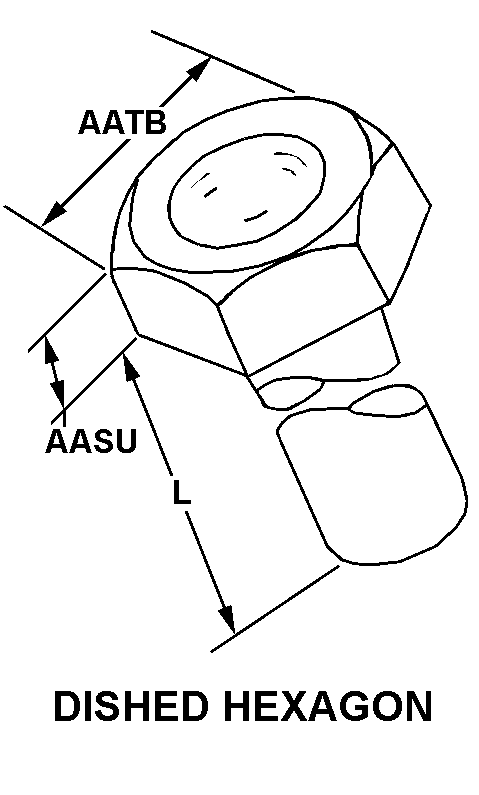5306013082869
Price Quote Get an up to date pricing and availability quote for this product. Order online or over the phone.
Quality Commitment
Serving our customers with quality and safety first.
- AS9120 Certified
- Audited supply chain
- ITAR Registered
- DDTC Registered
- HAZMAT Certified
- Customer service objectives
- Every product 100% inspected

5306-01-308-2869 Specification Set by the OEM (see RNCC code 3)
3a
RIGHT-Hand
0.400in. and 0.450in. ⁓29/64"
1.098in. and 1.128in. ⁓1-9/64"
dished hexagon
0.125in. and 0.140in. ⁓9/64"
0.430in. and 0.439in.
0.2481in. and 0.2487in.
0.076in. first hole and 0.086in. first hole
0.250in. ⁓1/4"
0.678in. and 0.698in.
28
160000 pounds per square inch
36.0 rockwell c and 40.0 rockwell c
0.925in. first hole and 0.945in. first hole
32.0 microinches threads
iron alloy 660
AMS5731 assn std single material response or AMS5737 assn std single material response
cadmium and chromate
QQ-P-416, ty 2 cl 2 fed spec single treatment response
unjf
80205-NAS6704 professional/industrial association standard
Cross Reference Parts Part numbers that meet the specification outlined on this page and set by the OEM
Identification Item Identification Guide (IIG) and Item Name Code (INC)

Definition Definition of approved item name (AIN): "BOLT,SHEAR"
A high strength, 160,000 pounds per square inch (1100 megapascals) minimum tensile strength externally threaded fastener designed for use in applications involving great shear stress. The head is designed to accommodate an external wrench or driver. The head is not designed to be held or driven with an inserted driver, nor is it designed for rotation by the thumb and fingers. The unthreaded portion is of specific grip length, plated or unplated, and is machined to a tolerance of one thousandth (0.001) of an inch (0.025 mm) or less of a specific diameter for items one inch (25 mm) or less in diameter. Items over one inch (25 mm) in diameter shall have a tolerance of fifteen ten thousandths (0.0015) of an inch (0.038 mm) or less. The nominal major diameter of the threads shall be at least one thousandth (0.001) of an inch (0.025 mm) below the minimum shank diameter, but not below the minimum major diameter for applicable class of fit, as shown in the screw thread standards, fed std h28 and/or other nationally recognized standards. A locking feature may be incorporated in the design of the head or threads. See bolt, machine and bolt, clevis.
5306-01-308-2869 Material Hazmat, Precious Metals, Criticality, Enviroment, and ESD
Indicates there is no data in the hmirs and the nsn is in a fsc not generally suspected of containing hazardous materials.
Precious metal content is unknown
The item does not have a nuclear hardened feature or any other critical feature such as tolerance, fit restriction or application.
Identification Codes
HMIC: Hazardous Material Indicator Code. A one position code that identifies a hazardous item.
PMIC: Precious Metal Indicator Code. A one position code which identifies items that have precious metals as part of their content. precious metals are those metals generally considered to be uncommon, highly valuable, and relatively superior in certain properties such as resistance to corrosion and electrical conductivity.
ESD: Electrostatic Discharge. Indicates if an item is susceptible to electrostatic discharge or electromagnetic interference damage. electrostatic discharge damage occurs when an accumulation of static electricity generated by the relative motion or separation of materials is released to another item by direct contact. electromagnetic interference damage occurs when an item comes into proximity with an electrostatic or magnetic field.
ENAC: Enviromental Attribute Code. Identifies items with environmentally preferred characteristics.
CRITL: Criticality Indicator Code. Indicates an item is technically critical by tolerance, fit, application, nuclear hardness properties, or other characteristics.






